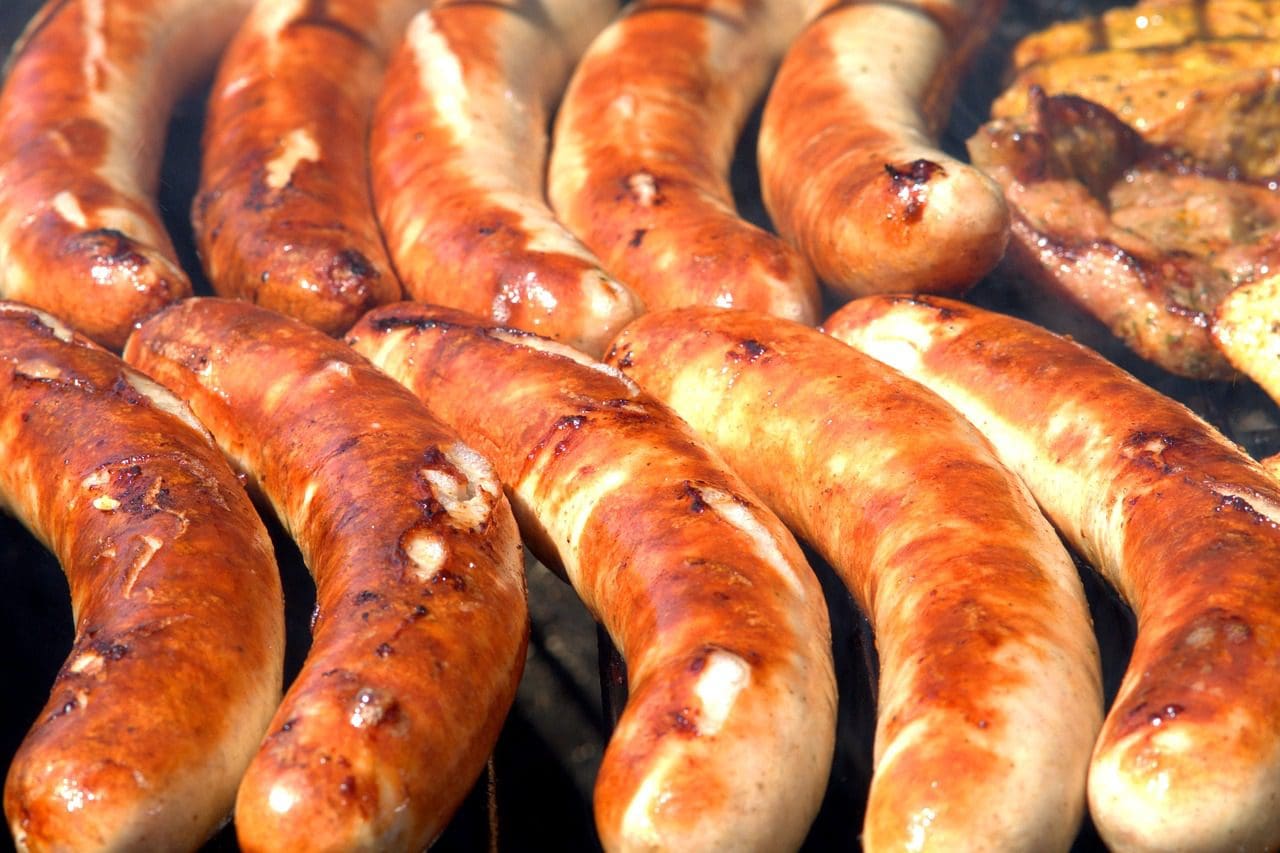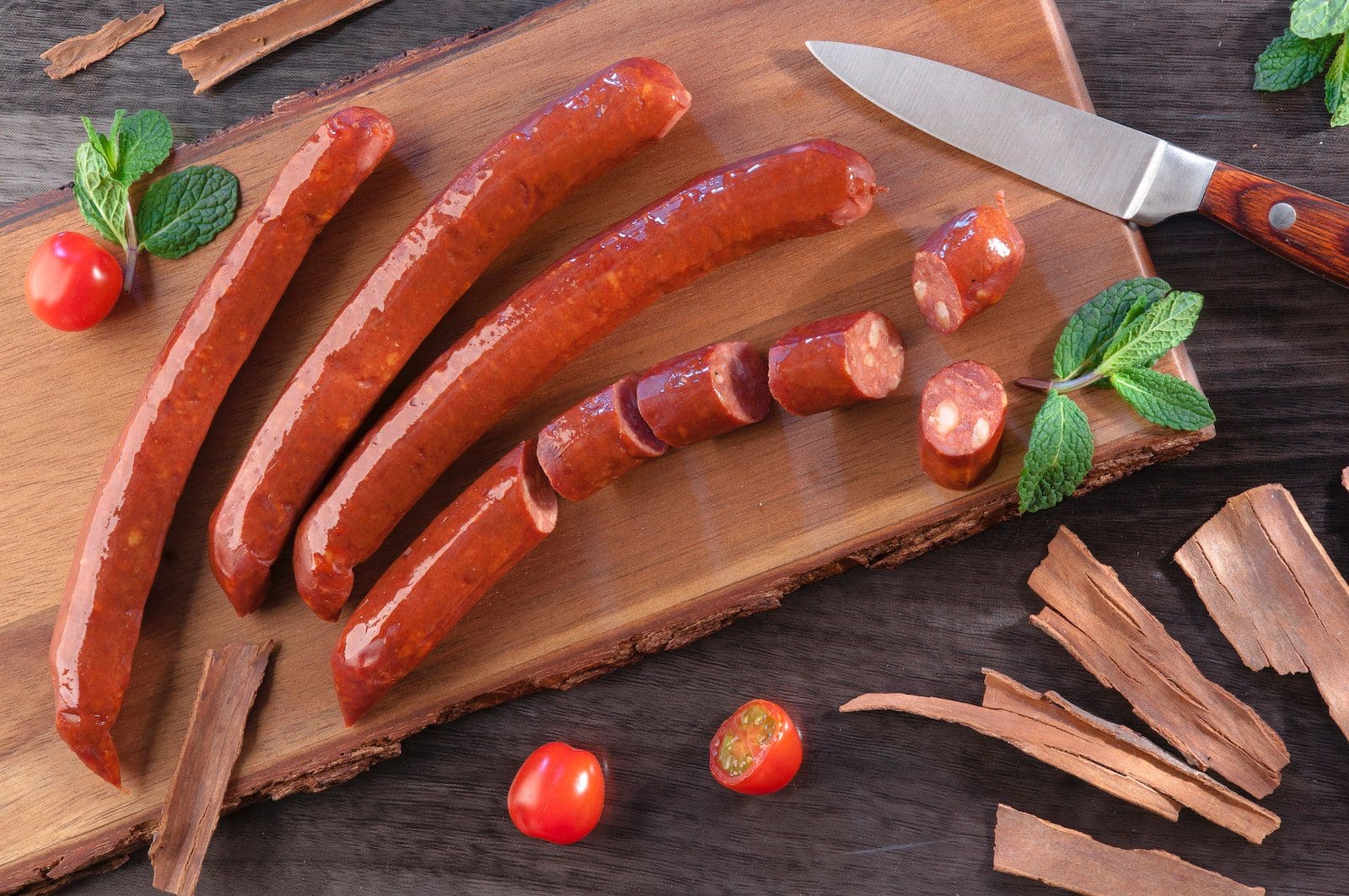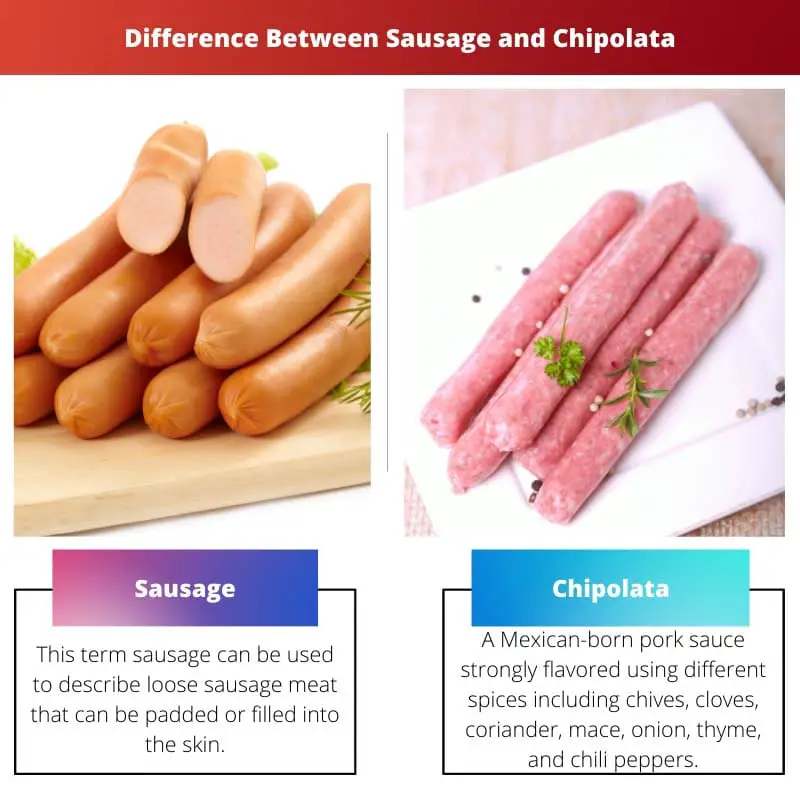The name is French and possibly originates from either the Italian chipolata, meaning mainly “prepared with onions.” According to several authors, an onions stew containing sausages might be used. Throughout the European Union, chipolatas are prevalent.
A sausage is some kind of foodstuff prepared from soil meat with salt, spices, and other flavours, pig, beef, or chicken. Fillers or extenders may include other components, such as grains or breadcrumbs. Other flavouring additives include some sausages.
Key Takeaways
- Sausages encompass ground meat products, mixed with spices and encased in the skin.
- Chipolatas are a specific type of small, thin sausage made from a blend of pork, seasonings, and breadcrumbs.
- Both are versatile food items, but chipolatas are commonly used in larger recipes as appetizers, side dishes, or components.
Sausage vs Chipolata
The difference between Sausage and Chipolata is that it originated in the united kingdom of America, but it originated in Europe. It is seen that Sausage is between 22 to 24 cm, but the Chipolata is between 20 to 22 cm. These smaller saucers also are commonly included as frank cocktails for snacks, and the bigger sausages are used as brunch sauces.

The chipolata was probably produced in France as a fresh sausage. The 1903 edition of Escoffier’s culinary handbook includes sausages of that name.
Usually, chipolatas were cooked as a fairly light and brief sauce. Chipolatas were made with ground-coated pork seasoned with salt and pepper and herbs and spices, following the specific formula of salted, rosemary, pimento, or muscular.
Sausage comprises crushed meat combined using grains or pan crumbs and mixed with oil, salt, and other seasons, preservatives, and, at times, fillers.
Some saucers were sold at a premium, whereas others were compelled to form connections into boxes. These could be raw, cooked, marketed, completely cooked, healed, smoked, or dried before consumption.
Comparison Table
| Parameters of Comparison | Sausage | Chipolata |
|---|---|---|
| Definition | Sausage is also an important component of many cuisines produced from different meats, from mild, fresh saucers to spicy, smoky, or treated choices, in a range of diverse ways. | A chipolata is just the kind of new sausage that was produced in France, comparable to Italian sausage, although frequently grown as a sausage-style breakfast, which is comparatively thinner and shorter, grilled rather than cooked. Usually, chipolata is prepared with raw pork, seasoned with salt & pepper, and spices |
| Size | It is thick in size | It is thin in size |
| Origin | It is originated from the United Kingdom | It is originated from Europe |
| Cross-section | It has a non-uniform cross-section | It has a non-uniform cross-section |
| Substitution | It is a substitute for meat | It is purely a meat |
What is Sausage?
The term sausage can be used to describe loose sausage meat that can be padded or filled into the skin. This item is normally cylindrical and enveloped in the skin when referred to as a ‘sausage.
‘Inside the traditional case of the intestines, but occasionally of synthetic materials, a sausage is created. Willows supplied raw, including pan-frying, broiling, and grilling, are prepared in numerous ways.
After manufacturing, many sausages are heated, and the box can be discarded. The production producing sausages is the foundation of improved butchering. Sausages have historically salt tissues and organs, including leftovers, organ meats, bile, or fats, to refugees it.
Indians subsequently put it inside tubular containers fashioned of a dog’s cleansed guts, creating a typical cylindrical form. Sausage, pudding, or salami are, therefore, among the oldest meals, whether they are cooked and consumed straight away or cured to different degrees.
The production producing sausages is the foundation of improved butchering. Sausages have historically salt tissues and organs, including leftovers, organ meats, bile, or fats, to refugees it.
Indians subsequently put it inside tubular containers fashioned of a dog’s cleansed guts, creating a typical cylindrical form. Sausage, pudding, or salami are, therefore, among the oldest meals, whether they are cooked and consumed straight away or cured to different degrees.

What is Chipolata?
A Mexican-born pork sauce strongly flavoured using different spices, including chives, cloves, coriander, mace, onion, thyme, and chilli peppers. But, variants of such a sausage may also occur when combining beef and pork, formed into lengths 1 to 3 inches long, with classic chipolata sauces that incorporate roughly minced pork.
Several meals also employ Chipolata sausages to produce various casserole-like delicacies as the main component that is combined alongside rice, beans, and veggies. You form a part of a Christmas meal wrapped as pigs in blankets in a piece of streaky bacon.
A la chipolata ornament was composed of onion, baguette sausage, chestnuts, pork salt, and occasionally Madeira sauces. Fried Chipolatas, Little meatballs of veal, milk, and pork, have been used in Switzerland. The spelling of Chipolatas in Italy is more common in Switzerland.
In addition to pork, the sausage frequently includes veal and milk. Fried or grilled Chipolatas are commonly offered to kids. Chipolatas taste and looks like St. Gallery Bratwurst’s smaller counterpart. You form a part of a Christmas meal dressed as pigs in blankets in streaky bacon.
Chipolatas were comparable to Australia’s sort of breakfast sausage. Sometimes they are mistaken as cocktails sausages, commonly offered at buffets, and are far smaller, thinner, and approximately half the length of the traditional chipolatas.
A la chipolata ornament is composed of onions, chipolata sausages, chestnuts, pork salt, and occasionally Madeira sauce carottes.

Main Differences Between Sausage and Chipolata
1. The Sausage is packed in a cylindrical box. But Chipolata is packed in normal box-shaped
2. The Sausage is large in size. But Chipolata is short in size.
3. The Sausage is made from ground meat with skin. But Chipolata is made from coarse-ground pork together with herbs and spices.
4. The Sausage is seasoned with various spices, But Chipolata is seasoned with fewer spices
5. The Sausage is golden in color. But Chipolatas are red in color.




